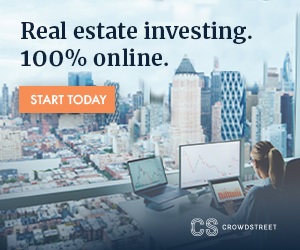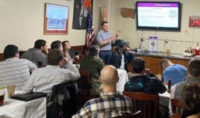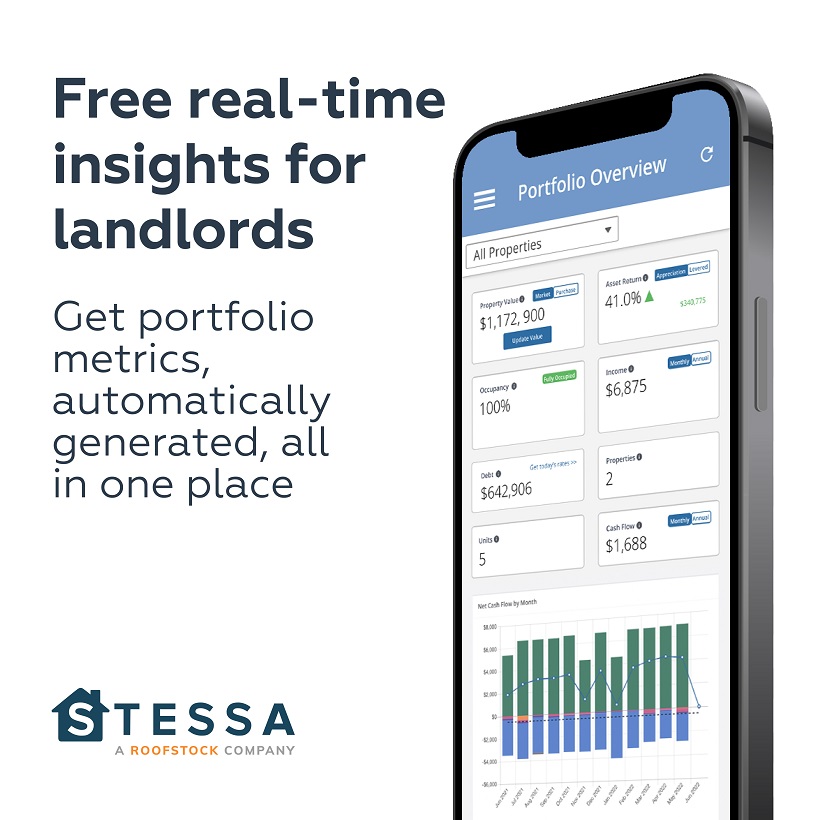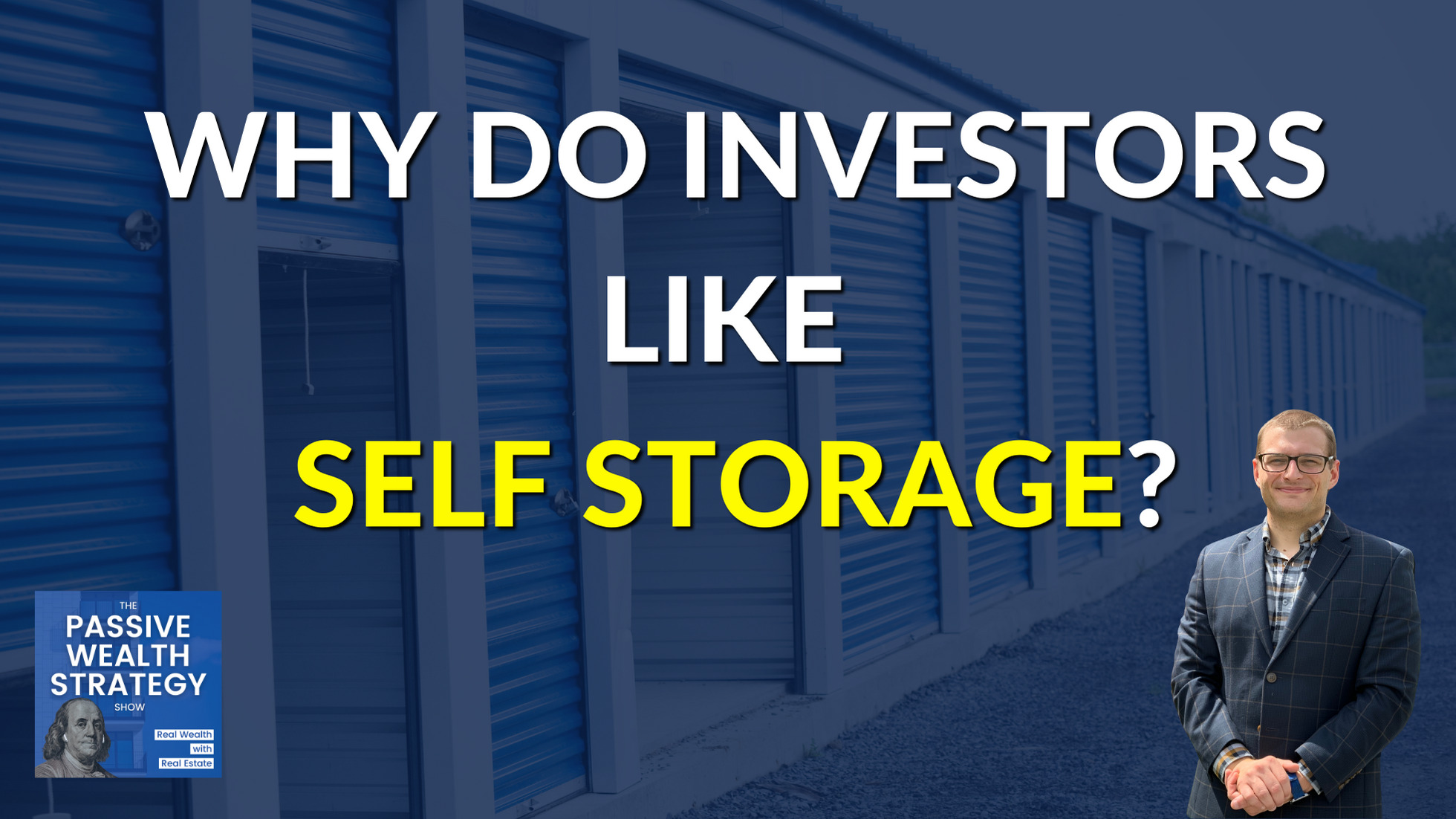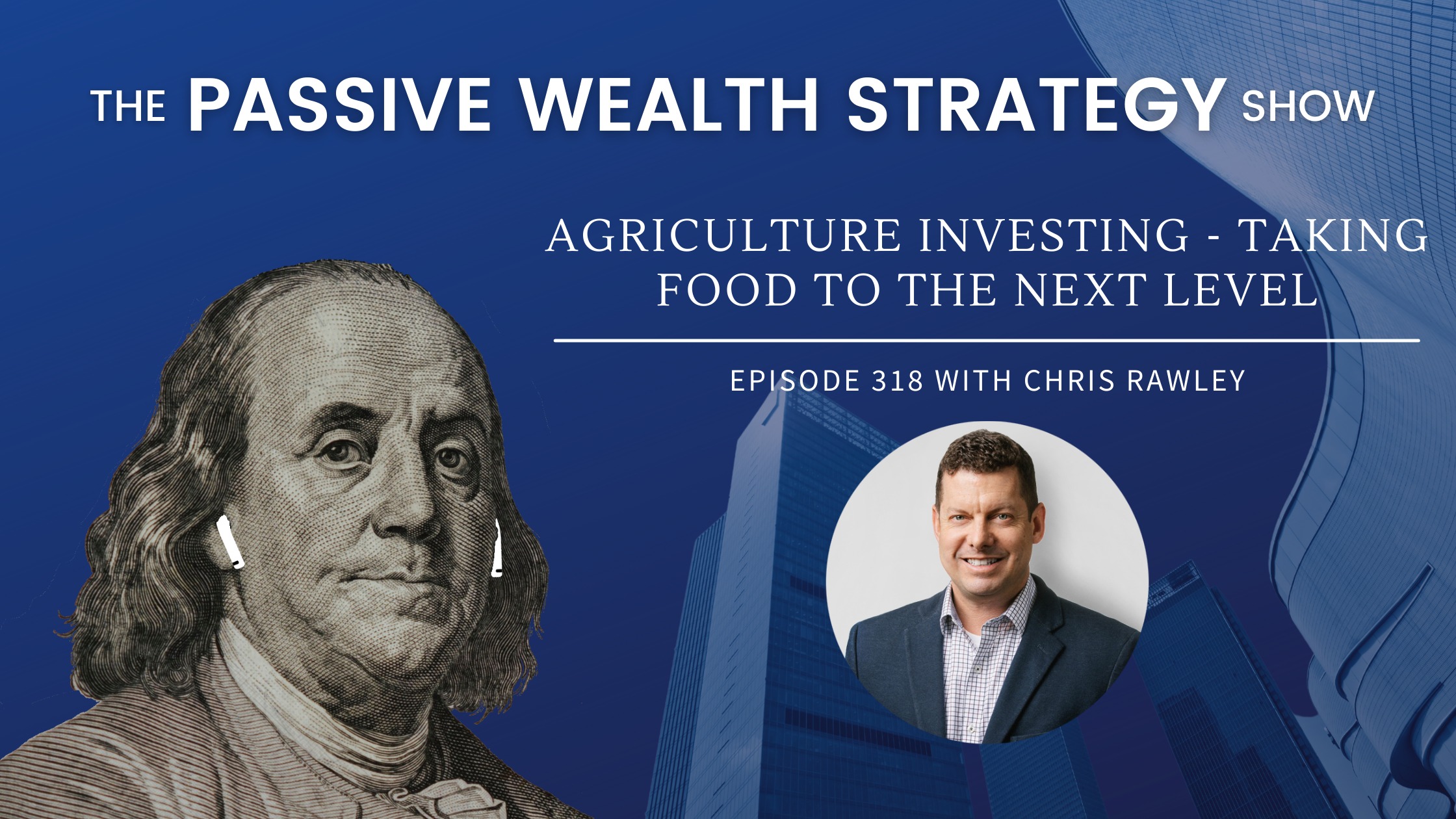
Agriculture Investing - Taking Food to the Next Level with Chris Rawley
Chris. Thank you for joining us today.
It’s great to be here at Taylor. Thank you for having me.
It’s great talking with you for our listeners out there who don’t know about you and harvest returns and what you do. Can you tell us a bit about your background and what you do?
Sure. So I’ve got a roundabout background to get to where I am with this company.
After college went into the Navy, did that for a while. Ended up coming back to Texas and working in commercial real estate as a property manager. So that’s how I got the real estate bug. Although I will say. I probably actually got it from my father and grandfather. My father was involved in a self-service storage business, one of the very first developers of those facilities in Texas.
As a little kid, I spent a lot of time sweeping out at the units and weed-eating and things like that and learning that part of real estate. But then started investing in real estate Similar path to a lot of people, single-family homes eventually got into some multi-family commercial, started working on passive syndications, still a little bit of land development.
And along the way there I decided that there was an asset class that I really wanted to get invested in, but I had no idea how to do it. And that was farming. There’s a lot of reasons for that. I traveled. The world quite a bit in my Navy career and saw a lot of places where people don’t have access to 24, 7 supermarkets and door dash and on-call food delivery and things like that, where they were completely reliant on what they grew themselves or what they grew locally.
I want to do invest in a farm. And it turns out at the time this was back in 2015, 14, that’s pretty hard to do. There were very few opportunities to directly invest in a farm unless you really knew what you’re doing. Had a lot of capital. So, at the same time, there were some platforms out there that were syndicating real estate.
And I decided to build one, to essentially allow people to come in passively, invest in farms. So my partner, Austin Manis, and I founded the company harvest returns back in 2016 since then. We’ve matched our pool of investors with more than 30 different farms and ranches and Agra businesses of all different flavors of all different geographies and keep growing and keep helping.
That’s fantastic. That’s a fantastic growth story as well. You’ve done quite a bit in those years since you’ve been in this business. So I guess let’s kick it off. And like, where do you even start to find an agricultural investment? Because find a farm to invest in yet. You’re not going to find that I would assume on like LoopNet or crazy or if you do, how do you even get started?
That breaks into it. No. So there are, there’s a lot of land brokers. If you’re just investing in an entire farm, you want to go out personally and buy a farm and run it or pay somebody to run it. You can certainly do that. There are land brokers out there and there are a few websites and things like that.
And that’s one way to do it, but that’s something I don’t recommend you do. Unless you’ve got the experience and the knowledge and a lot of capital through around Warren buffet and bill gates who are just buying up all the farmland all over the country. So that’s one of the reasons we started this company that the way we find our deals is the farmers come to us.
Farmers come to us when they’re either starting or expanding our business. When they’ve got a new idea to develop say an indoor farm or an urban farm or more of the large-scale greenhouse projects. And I’ll get more into that maybe later in the show, but farmers are dissatisfied with the ag financing system and just like a real estate investor.
If you want to grow to a scale, you’re gonna, you might need to bring in outside investors. And that’s what a lot of the farmers and agribusiness entrepreneurs who come to us. Doing they’re looking for outside investors to help them expand their own money and be able to buy something where they can get some economies of scale, just an individual investor might get together or become part of a pool and invest in a multifamily or that sort of thing.
Interesting. What is the problem or what are the problems with the agricultural financing system?
So the vast majority of farming in the US, when people think about farming, you think about driving through the Midwest and seeing acres and acres of corn or wheat, it’s row crops.
That’s essential, that’s where most of the money is. That’s a commodity crop. It’s where most of the ag production is. And money in the US is and the ag finding system pretty much grew up around that. It’s very localized. There’s an ag credit system. It’s great if that’s what you’re doing, but if you’re trying to do something different, like an indoor farm, urban farm, a vineyard, And these kinds of specialty things, especially agriculture, expanding your livestock herd.
These are all types of businesses that we’ve heard from farmers that just are not being well-served by the existing ag finance system. So yeah, we originally started out with the intent of becoming an investment platform. But now it turns out we’re probably, we are helping a lot of investors, but we’re also a.
Definitely helping farmers out there, farmers and ranchers. And that was the whole surprising side of the business. We’ve learned so much about agriculture and farming. And although I’ve got people on my team that comes from an ag background, I personally don’t. So we’ve all been, we’ve been learning and growing and we’ve today.
I think we’ve raised over $17 million for farms over 30 different farms ranches or, ag-related businesses. And, in the process produce a lot of good food and jobs and all the good things that investment goes with.
Cool. So tell us about some of those businesses that you’ve invested in.
You’ve helped farmers starting to, you mentioned a few in terms of greenhouses and maybe wineries, things like that. What can folks invest in what’s out there to be?
Yeah. So you name it? We’ve seen it. We’ve just, we get a couple of deals across our desk every single day. They just come to us because they know we’re out here.
And it’s everything from, yeah. We just did a vineyard in Texas. One of the things with. Texas, there’s a very strong wine culture growing wine culture in Texas, probably second, only to California. The problem is we don’t have enough breaks here. So a lot of the made in Texas wines are actually with California grapes.
So we just helped a company raise some capital, expand their vineyards in west Texas, and produce more. Grapes to support Texas wineries which is awesome. We’ve done. We’d like to in Texas deals, we’ve done recently done an elderberry farm. So elderberry is an interesting sort of product that it’s a superfood, has a lot of nutritional value.
There’s a lot of elderberry products. If you get out there drinks and the nutritional supplements and things like that, but they’re all made from, or the vast majority are made from imported elderberries from Europe that are dry. I’ll lose all their potency. So we’ve got fresh elderberries in Texas.
Those happened to be two Texas deals, but we’ve done cattle ranches. Grassfed cattle primaries are especially in Georgia, Southern California, Colorado. We like grass-fed cattle because it’s a premium product. It’s not necessarily the commodity product that most catalysts. So it’s like a lot of premium products, think of it.
Think of a class, a real estate it’s more expensive, but it’s a. Holds his value does well and in lower economic times than the commodity product.
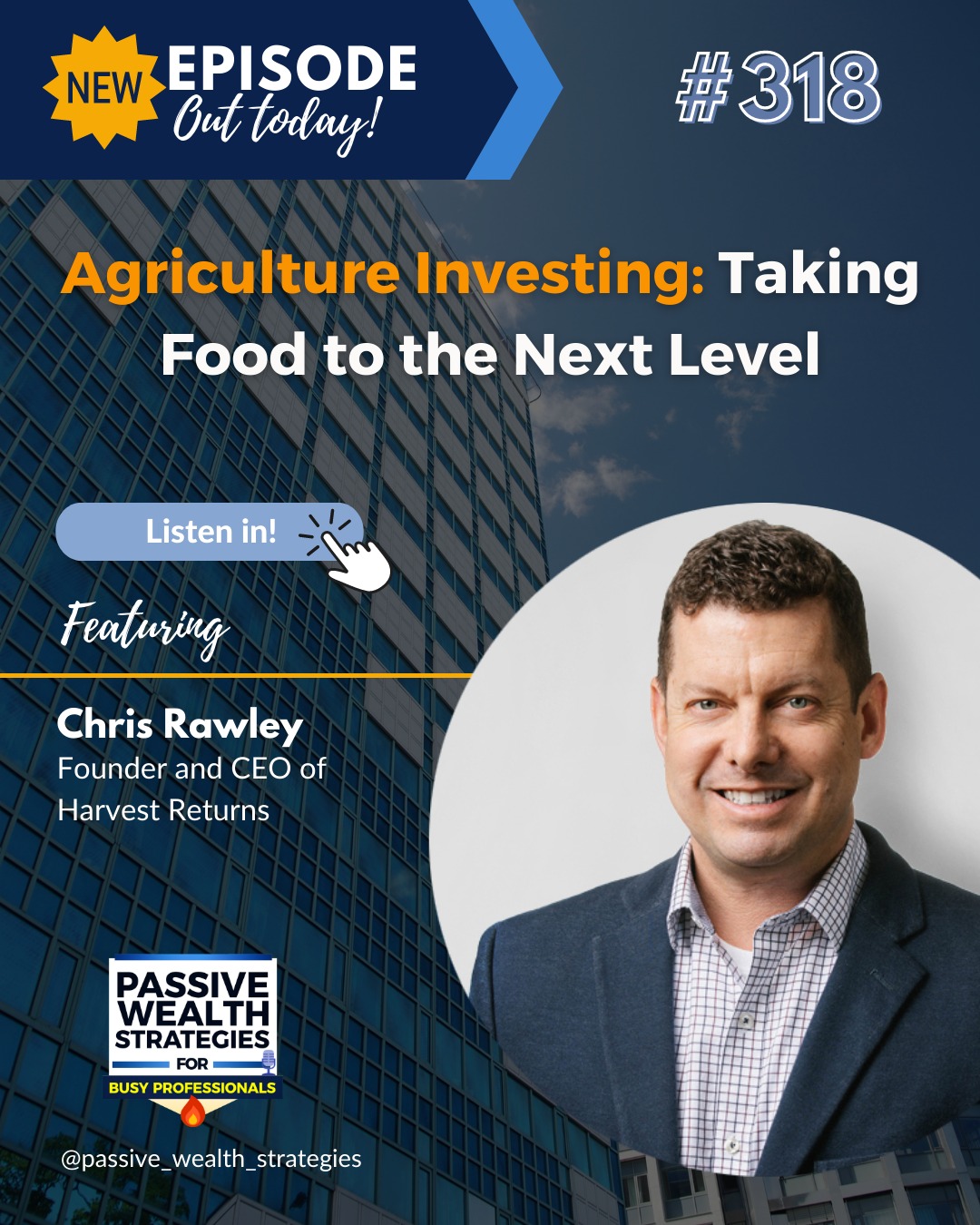
Agriculture Investing - Taking Food to the Next Level with Chris Rawley
So what does the typical say return to the investor? Look like, I, our background, we buy multi-family fix it up to a value add a deal, and then there’s some cashflow along the way, but the big paycheck comes in the back end.
And once we sell it for more money, wherein this case with the agriculture. Purely cash flow or how are you exiting the deal?
What does the cash flow all look like? Tell us about all that. Yeah. So there are some other ways, there are some other platforms out there that, that do agriculture. Now we were one of the first what probably differentiates us is the way.
We put the deals together and it’s very similar to commercial real estate. Cause that’s what I knew. So that’s how the way we started. So everything you just said, the payoff comes at the end. There are cashflows. Sometimes as frequently as quarterly, sometimes annually, sometimes you don’t see them for several.
years so that they’re going to investing in real estate in there’s a lot of similarities between real estate and.
Investment or ag investing. But one of the differences is we’re, you develop a building and you move in tenants and you start making cashflow. It can take years to develop a farm. You start out with raw land and let’s just say, you’ve got a greenhouse. It might take a couple of years to construct it in and you start growing and producing the cash for, or if it’s something like tree crops like we’ve done hazelnuts you plant that you and protect the land, you improve it.
You put irrigation, you plant the trees and they take a few years before they start pushing out cash flow. So we, that said, different types of investment risk profiles. Just like you’d be investing in single-family and multi-family or commercial office building or storage facilities or whatever, industrial, same thing with ag, lots of different flavors of it.
It’s not just all row crops. And that’s one of the things that differentiates us from our platform is that we’re doing that kind of niche, investment opportunities. Our exits, it could be as short, we’ve done some debt some structure, some notes that are collateralized that are as short as the seven months to a year are for a couple of years to, as long as a, a 10 year, 10-year sort of thing has been here.
We recently did was roughly a 10-year timeline with the payback in eight years. And that’s all based on, the biology of growing grapes and producing grapes and that sort of thing. So exits, it could be a cash-out refinance, just like you built, you develop a building and starts to stabilize cash flow and you cash them out.
So that’s one-way cash-out. The targeted, your cash flows grow. You develop a project, the cash flow starts pushing out cash, and you’re able to exit a targeted IRR. And then a third, especially on some of our more, developmental deals or speculative deals, you’re going to see a higher IRR of course there’s higher development risk, but you’re going to see, potentially a merger acquisition.
Or even an IPO and some of the companies with that we’ve invested in. And we also do ag tech. It’s not necessarily real estate, but it’s something it’s, the brick and mortar of supporting agriculture. So we’ve done several of those deals lately, too. And those are more of your sort of angel investing with the potential for a high.
Cool. So you mentioned a few things about you, you’re either coming in as a debt partner with a collateralized note or you’re investing equity, things like that. If you are making an equity investment, are you able to say, get a loan? If we’re buying a multi-family property, we’re going to go get a mortgage.
It’s going to be the pretty, relatively low-interest rate. Whereas in this case, Are you able to leverage? Is that smart? Can you tell us about the, especially the uses of supplemental, that things like that?
Yeah. We come in deals where the entire deal is equity and in our investors are a big part of it.
And maybe the founder has some, the principal has some equity involved, some skin in the game too. We’re a small part of the capital stack. A project where we might be the last money. So these, a lot of these large-scale greenhouse deals. And when I say greenhouse it’s, people need to envision, it’s not just like a little.
No small thing in a backyard. These are literally acres and acres of buildings that are large multi-year construction projects, irrigated hydroponics. They’re springing up all over the country. They started in Europe, but now we were in one in. Kentucky that’s been fully developed and is spitting out cash.
And we’re going to have an exit here pretty soon to a one that’s being developed in New Hampshire to some others that we’re looking at. And those have, those are, $50 million projects, just like building a multi-family might be. And so we might only have a million of it in equity. And then.
There are other investors that are coming in and then there’s a debt component, as you can imagine. So it’s very similar to structuring any kind of large-scale construction project. And, our projects run the gamut from that’s on the higher end, down to smaller, a vertical farm. So a building in an urban area.
It’s just a shell that might have been sitting vacant for years. It gets redeveloped into something. Neat. Like we’ve got one in Birmingham, Alabama, yellowhammer farms started out as a shell building vacant, and now it’s, an urban vertical farm that’s selling produce locally direct to retailers or direct to consumers to restaurants and to, to local groceries.
And the earth, the local food movement is a big deal. Most people don’t realize that most. Like real estate agriculture is local. The returns can be local, but the difference is the products can be shipped all over the country. However, more and more, especially with recent supply chain shocks more and more people want to grow their food locally and consume their food locally.
It takes a lot less To move lettuce across Birmingham, Alabama than it does to move it from Salinas Valley, California, to Birmingham, Alabama, which is where actually most of the lettuce and leafy greens are produced as in Salinas valley. But that’s we’re seeing that ratio begin to change as more produce is produced outside of California.
And California is awesome because it’s got amazing weather. Although now they’re having a lot of water problems there and so people are looking for alternatives. And one of the ways to do that is to build these vertical urban farms. Interesting.
So when you mentioned the one in Kentucky in particular, just pick on that as I think about it, really from the outside, what I picture is a more premium product that, the elderberry kind of sounds like something where it’s probably fairly expensive. You’re competing with, an imported product and you’re probably able to get a lot of money out of it. Whereas if you were. Building a big indoor greenhouse to grow red, delicious apples.
I love apples. I hate red delicious apples. So it probably, that probably doesn’t make as much sense. You have to grow the trees and then they’re a fairly cheap type of product. Is that right? Are these all premium products? You mentioned lettuce there, which I wouldn’t really consider a premium product.
No, it’s not necessarily premium. Although when you see the kind of lettuce that comes out of these greenhouses, it is pretty amazing. It’s very nutritious and you actually lose nutrition the longer. The lettuce may look perfectly fresh, but by the time it gets to you and, flyover country from California or to the east coast, it’s been sitting here for a week refrigerated, whereas you can go and basically buy lettuce that has been picked that day or the next day.
So it is more nutritious than it does taste. It’s more flavorful. I was up at our, we have an urban farm slash restaurant in Omaha. I was up there a couple of weeks ago and it. I’m not a solid guy, but I absolutely love the salads that came out of this place. And it’s called gathering Omaha. Anybody happens to be in Omaha.
So it is the, in the case of the Kentucky greenhouse Kentucky fresh harvest, they wrote to me. So they grow just little packs of cherry tomatoes. Like you might see, but they have several varieties and they distributed them regionally there. So they’re still local-ish. That’s more regional distribution, not necessarily a premium product.
It’s a great product, a high-quality product, but it’s not a high-end product. It’s the fact that they’re able to grow and produce those sort of economies of scale and grow more regionally than having to ship that boot across the country
And probably all year or type of growth cycle.
That’s the other key to indoor.
There’s a lot of benefits. It’s lower water, pesticide waste, no runoff, those sorts of, environmental benefits. But yeah it’s a. You can grow year-round. The other thing from a market perspective is if you’re growing in a vertical farm and your con, your chef comes up with a new and you’re selling to local restaurants.
And he says, oh, I got this new recipe. And I need a certain flavor of basil that’s, and there’s a lot of flavors of Bazell apparently I didn’t know that. Then you can start within say six weeks, you can have those new production going. Whereas if he wanted to find that Bazell, he’d have to go to wherever it’s grown, mine might be outside the US and import it, and the quality is just going to be good.
And it’s probably going to be a higher price too, with all those transportation costs.
Interesting. So I suppose that’s something I would be curious about here is especially a few years ago, when I think it was the farm bill. I forget exactly what bill, but. CBD hemp was legalized in the United States. And I feel like we saw a huge groundswell of folks, at least selling CBD type of products.
You, do you target that? Do you think that was overblown? What are your thoughts?
So we are invested in a couple of hemp CBD companies, not cannabis, we haven’t done cannabis and we may never do cannabis just because of the regulatory issues behind it. But yeah, the market had a big dive at the end of
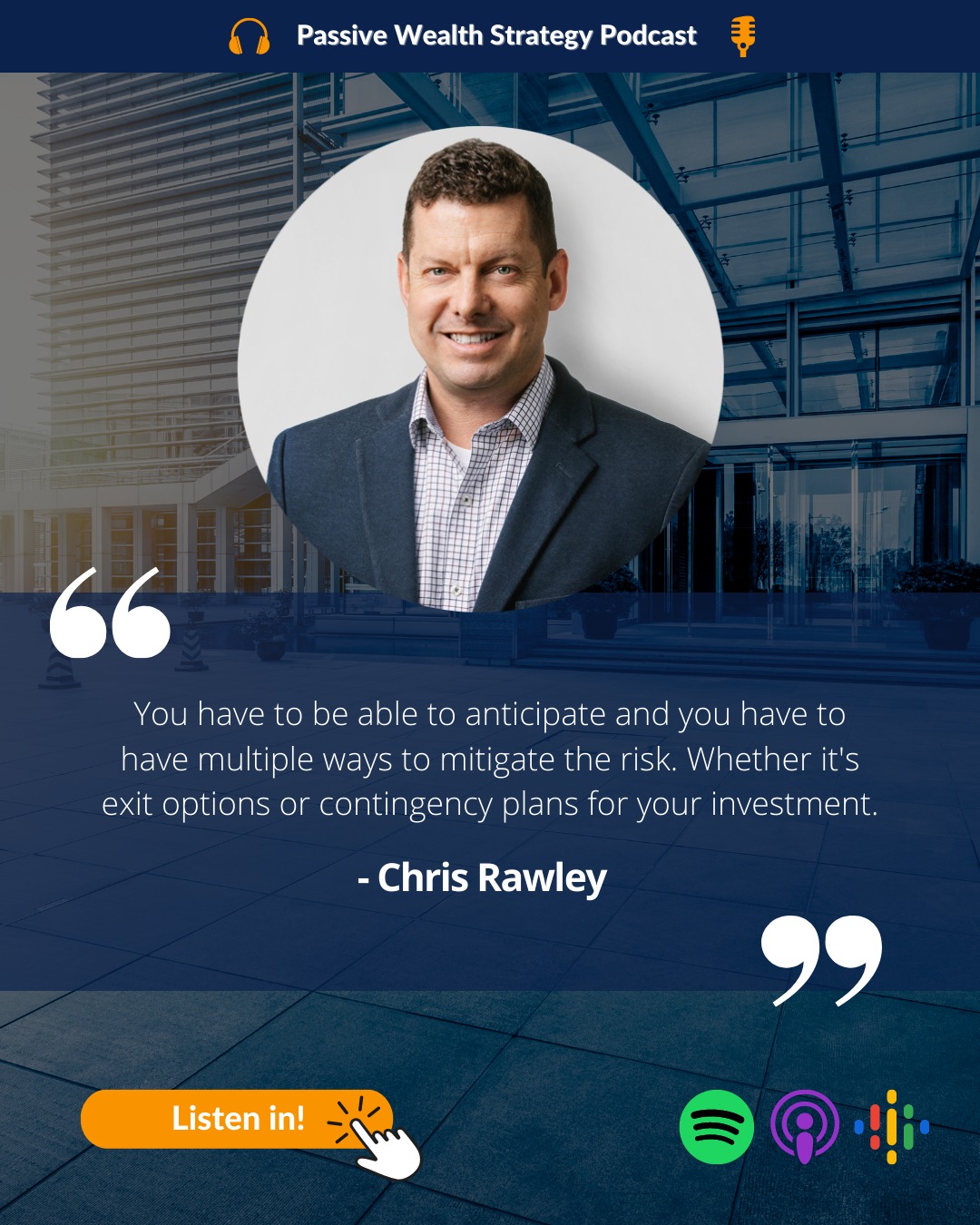
You have to be able to anticipate and you have to have multiple ways to mitigate the risk. Whether it's exit options or contingency plans for your investment.
Chris Rawley Tweet
2019, early 2020, because everybody was getting into it, which is ironically the same thing that happens when they legalize cannabis in a state.
Everybody thinks they’re making a lot of money, but the only people that really keep making money are the people that keep growing it illegally. So that’s. Yeah, exactly. A lot of people made a lot of money with cannabis. I’m not one of them, but there are people out there.
Interesting. So it’s I would hate to use, it’s not boring, but you don’t want to go for like the, I don’t know, that’s like a hot topic.
Whereas you want to go for the more, quote, unquote, I hate to use the word boring, but the tomatoes might not be quite as exciting or sexy or on the news, but it’s profitable now.
Yeah. It’s high quality. The way it’s grown, I think is a little bit sexier than growing in a field.
And it’s certainly more sustainable and these companies are fairly new, but there’s been, there are some very large scale investments that have gone into some of these indoor ag companies, to the tune of there are some unicorns out there, billion-dollar valuation companies like No AeroFarms BrightFarms.
I might those are some of the major players. We’re actually working with some of the smaller players and helping them get bigger and then compete in their own little niche.
So a big question, a lot of our listeners out there are passive investors. The big question comes down to evaluating these types of investments and whether it’s a reasonable business plan or it’s a right fit for, the individual that’s considering investing in it.
What are your thoughts about that? Evaluating these investments from the outside, from a passive investor standpoint.
A deal comes to us, a farmer comes out and says, Hey, I’ve got this plan. Here’s my business plan. This is my idea. This is my background. We’re going to do the due diligence on it.
Just if a developer came to a group of real estate, investors said, Hey, I’m going to build this great new apartment building and wherever you guys are going to
support me, we’re going to ask the same question. Have you done this before? What’s your background? What’s your team who’s on your team.
Do you have one, we look for a team that has a farming aspect and a business aspect because there’s a lot of great farmers that can grow things, but they suck at business. And there’s a lot of great business people that have never grown anything and they think they can, they think it’s easy and it’s not.
So we look at a team, even if it’s a husband, wife team, or, an individual that has the background. So first of all, we will evaluate this. Then we evaluate the market for what they’re doing and how they’re doing it. And we obviously we learn as these markets evolve, especially on the indoor side, a lot of people are learning, what works and what doesn’t work.
And then we look at the numbers of course. And so is it going to cash flow? Is it going to get is and is that team going to be able to access it? The performer financial projections that they say they are. So it’s very similar to doing due diligence on any kind of real estate deal where you gonna purchase something value, add, or start from scratch.
Okay.
How about what are your thoughts about say variability of say commodity prices down the road and projected, Just to hit on the tomato, that the cost of cherry tomatoes next year, three years from now, or whenever the project, happens to be spun up when you’re evaluating it. Do you see a lot of variability in those commodity prices?
And what are your thoughts about it? Looking into the future and saying, I think this is a viable investment because the cost of a tomato is not going to go to a third of what it is.
Yeah. I, that is a great question. And for the most part, the deals we do, they are you know, focused on these niche products that are not necessarily commodity price-driven.
They’re local, the prices are locally driven. And the other beautiful thing we love about indoor agriculture is if all of a sudden the price of something you’re growing falls a lot, you can, it’s pretty easy to reconfigure and start growing again. And the growing cycles are short, short of four to six weeks in some cases.
It’s, whereas you’re growing wheat, you do one crop a year, sometimes two. And if you lose one of those crops, so it’s a big piece of this as risk management, if you lose. Bazell crop. You start over and in six weeks you got more, Bazell may be less than a, you lose your annual wheat crop.
You’re hosed. And that’s where that’s why there are all that insurance and government backstops for those sorts of commodities because it is, there’s, some of those are some of those I completely disagree with as a capitalist and some of them are probably necessary to keep certain farmers farming.
But it also distorts the market as well, because you have people growing things. They really shouldn’t be growing because the price, the prices in the market don’t support it. Our market, our farmers, we’re very much free-market guys. Cause they have to be.
When you’re going to hear about a lot, I feel like in this space, when you’re talking about subsidies is corn, we have.
Corn growth in the United States compared to the amount that we actually eat as corn, we get high-fructose corn syrup and ethanol and all these other things that it’s turned into. And a lot of that comes down to the way the subsidies are made and all the government insurance and all of that. It’s not necessarily a free market force.
Exactly. And we don’t do corn.
All right. Great. Right now we’re going to take a quick break for ours. All right, Chris, I’ve got three questions. I ask every guest on the show. Are you ready?
You were muted there for a second. All right, we’re back now. First one. What is the best investment you ever made other than in your educator?
So I’ve made a lot of investments in a lot of different things, real estate included in stocks and bonds. I’m going to say and this is maybe premature is my own company.
And not only did I put a lot of our own capital into harvest returns, but we put a lot of blood, sweat, and tears and the team. And not just from a hopefully economic standpoint at some point, but that the impact we’re making all across the country and. Yeah, producing food, making better food and making jobs, and helping farmers and ag entrepreneurs.
So I’ll say my company. Awesome.
Awesome. We had the best investment. Now we go to the other side of that coin, the worst investment. What is the worst investment?
You ever. Yeah. I’ve had a few of those because that’s how you learn. I’m going to say, I’ve never really been burned on a real estate side, so I don’t have any real horror stories there, but a long time ago during the.com bubble, I invested in Ron.
And 99% of my principal, literally overnight, it was crazy. And a lot of lessons from that couch.
Real estate is a way to go anyway, escaping the wall street casino. That’s what we’re all about on this show. My favorite question here at the end of the show is what is the most important lesson you’ve learned in business and investing?
So people. Underestimate the importance of risk management and any investment whether it’s. Investing passively, or you’re putting together a project and doing it yourself or with a group of other people you’ve got to, you’ve got to really have a handle on your risk. And, we see this with COVID people like, oh, that’ll never happen.
We’ll never all get my restaurant shut down. Or my, my, the tenants will not have to pay rent to me. There’ll be, for over a year, there are always those Black Swan events. So you have to be able to anticipate and you have to have multiple. Ways to mitigate the risk, whether it’s exit options or contingency plans or whatever.
So risk management is getting a handle on your risk, understanding your risk, identifying it, and then thinking about how you’re going to mitigate them, whether it’s the insurance of various flavors or operating. Nice.
Chris, thank you for joining us today. Really cool stuff you’re doing, and I appreciate that you’re making these types of investments available for the passive investors out there.
If folks want to reach out, if they want to learn more about your business or what you do or ask some questions about agricultural investing, where can they track it?
Yeah, so we’re of course we’re on the internet harvest returns.com. We’re also on social media. We like this. This is a new asset class where a lot of investors, there’s a lot of educational material on our website, and love doing podcasts like yours because we reach people and help educate.
Nice.
It’s awesome stuff. I’m glad you’re out there doing it. It sounds very innovative as well. When applied correctly really interesting. And I’m glad you’re out there doing it to everybody out there. Thank you for tuning in. If you’re enjoying the show, please leave us a rating and review on the apple podcast.
Five stars. If you don’t mind, I appreciate that so much because that helps other people learn about the show, because that helps us rank higher in the apple podcast ecosystem. I’m always honest with you guys that gives me a nice little warm and fuzzy feeling. Cause I get this. That you’re engaging with the content and you’re escaping and the wall street casino, along with us.
If you know anyone who could use a little bit more passive wealth in their lives, please share the show with them and bring them into the tribe. Don’t forget to subscribe. We’ll catch you here every Monday, Tuesday, and Thursday, helping you escape the wall street casino. That’s what we’re all about here.
Appreciate you tuning in once again. I hope you have a great rest of your day and we’ll talk to you on the next one. Bye-Bye.
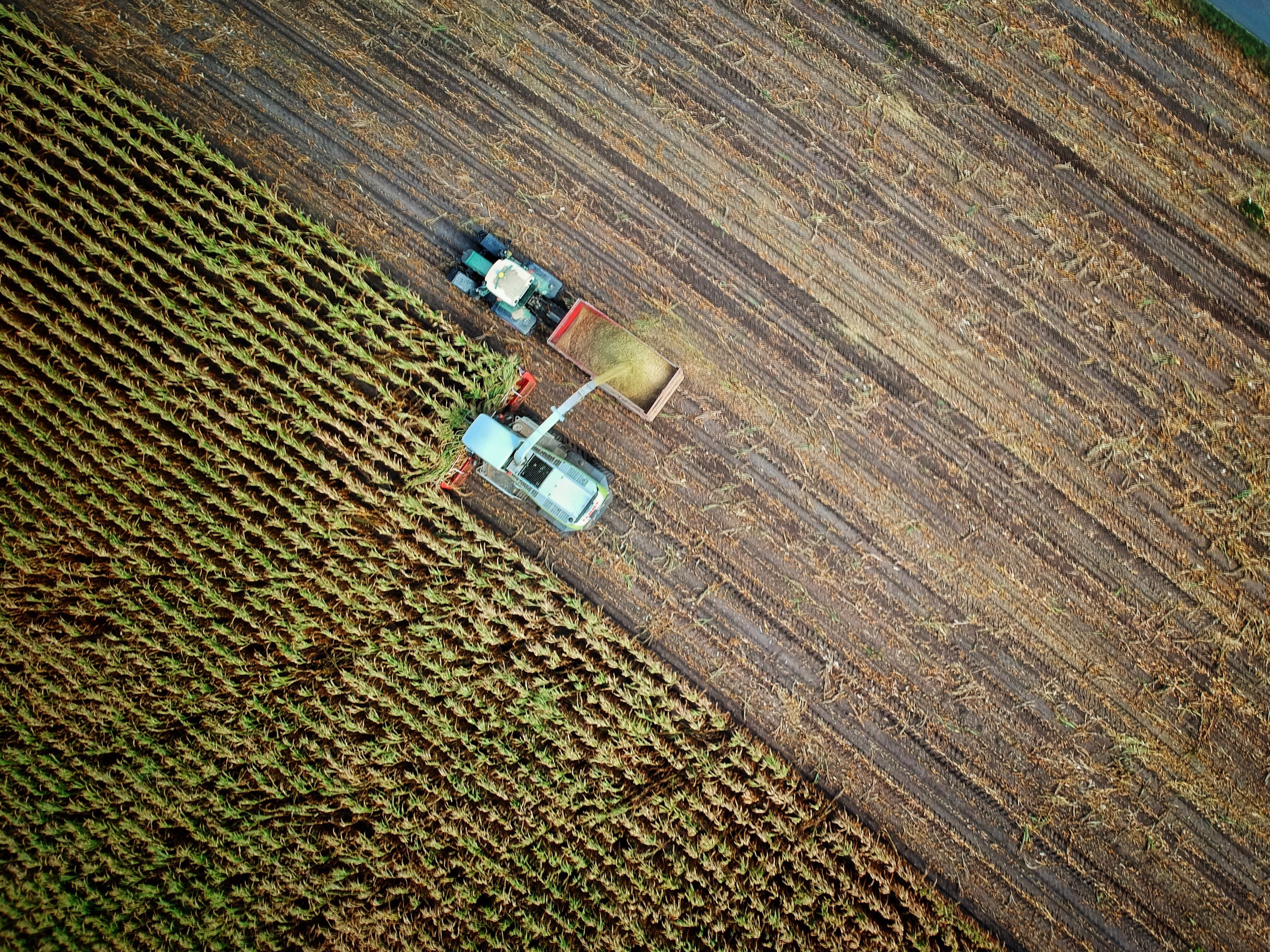
Taking Food to the Next Level
About our Guest
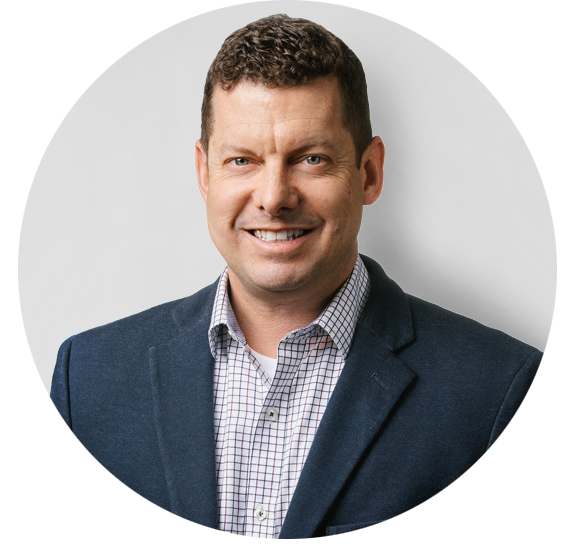
Chris Rawley
While serving as a career naval officer, Chris Rawley visited dozens of war-torn and poverty stricken countries and began to appreciate the importance of agriculture to every single person on earth. As a professional investor with this new found appreciation, he decided to invest in a farm, but quickly discovered that these types of assets were inaccessible to the average person. The problem drove him to create Harvest Returns in 2016 to democratize investments in agriculture.
Rawley has held corporate management roles in Jones Lang LaSalle, Electronic Data Systems, L-3 Communications, and served as a defense consultant at Special Operations Command with Blackbird Technologies. He has invested in real estate and income-producing agriculture for nearly two decades. Rawley is an angel investor in early-stage agriculture and food companies, including the Indian agriculture FinTech company Jai Kisan. He serves on the advisory board of the AgTech start-up AgroFides.
Episode Show Notes
Chris Rawley has held corporate management roles in Jones Lang LaSalle, Electronic Data Systems, L-3 Communications, and served as a defense consultant at Special Operations Command with Blackbird Technologies. He has invested in real estate and income-producing agriculture for nearly two decades. Rawley is an angel investor in early-stage agriculture and food companies, including the Indian agriculture FinTech company Jai Kisan. He serves on the advisory board of the AgTech start-up AgroFides.
Rawley is a Captain in the Navy Reserve, serving as the Reserve Chief of Staff for United States SIXTH Fleet, and provides oversight for more than 500 sailors operating across Europe and Africa. During his 29 year military career, Rawley has filled a variety of leadership positions in naval, expeditionary, and joint special operations units afloat and ashore. He has deployed to Afghanistan, Iraq, throughout Africa, the Middle East, and Western Pacific. Rawley has a degree from Texas A&M University, earned an MBA at George Washington University, and is a graduate of the U.S. Naval War College.
[00:01 – 04:43] Opening Segment
- Get to know Chris Rawley
- Who is Chris and What is Harvest Returns?
- Real estate and farming
[04:44 – 09:56] Agriculture Investing
- Where do I get started?
- Agricultural Financing Systems
- What’s out there that’s worth investing in?
- From wineries to elderberry farms
[09:57 – 24:28] Taking Food to the Next Level
- Return of Investment and Cash Flow
- Equity and Supplemental Debts
- Not necessarily premium products but all way nutritious and delicious
- Indoor Agriculture and Vertical Farms are Amazing!
- Chris talks about Hemp CBD
- Evaluating similar investments from the outside
- Projecting Commodity Prices
[24:29 – 31:26] Closing Segment
- Quick break for our sponsors
- Groundfloor offers short-term, high-yield real estate debt investments to the general public. Check www.passivewealthstrategy.com/groundfloor/ to get started.
- What is the best investment you’ve ever made other than your education?
- Harvest Returns
- Chris’s worst investment
- In Dot-com Bubble
- What is the most important lesson that you’ve learned in business and investing?
- Risk management
- Connect with my guest. See the links below.
Tweetable Quotes:
“Like real estate, agriculture is local.” – Chris Rawley
“The end product, it’s high quality. The way it’s grown, I think, is a little bit sexier than growing in a field and is certainly, you know, more sustainable.” – Chris Rawley
“You’ve got to really have a handle on your risk.” – Chris Rawley
————
Connect with Chris Rawley through Facebook, Twitter, Instagram, and LinkedIn. Visit their website https://www.harvestreturns.com/.
Invest passively in multiple commercial real estate assets such as apartments, self storage, medical facilities, hotels and more through https://www.passivewealthstrategy.com/crowdstreet/
Participate directly in real estate investment loans on a fractional basis. Go to www.passivewealthstrategy.com/groundfloor/ and get ready to invest on your own terms.
LEAVE A REVIEW + help someone who wants to explode their business growth by sharing this episode or click here to listen to our previous episodes

